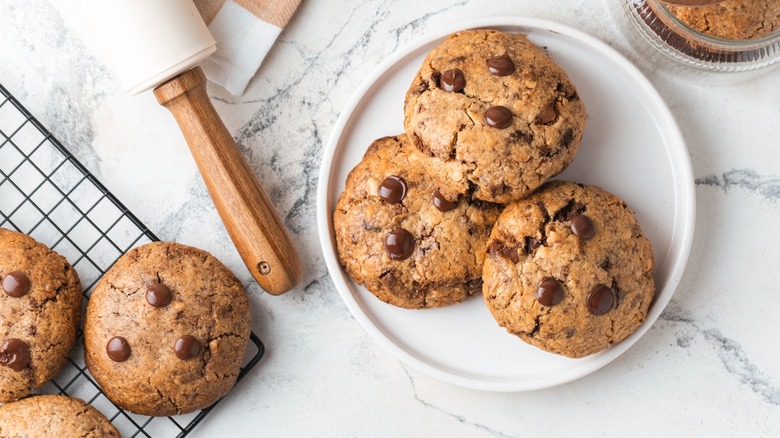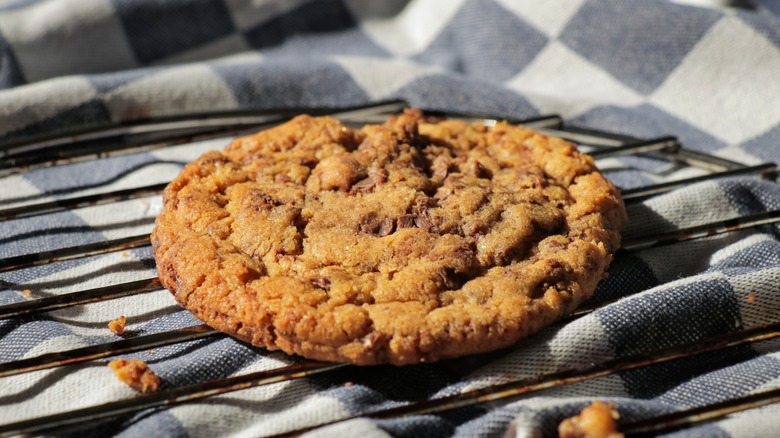For The Perfect Batch Of Cookies Never Skip This Step Before Baking
We may receive a commission on purchases made from links.
The advantages of baking cookies at home versus buying them at the store are that you can make them exactly how you like and experience the nostalgic smell of baked goods wafting through your house. One disadvantage is that there are plenty of mistakes that can ruin a batch of cookies. Baking is both an art and a science. If anything goes awry when precisely measuring all your ingredients, things can take a turn for the worse before you know it. Chef-instructor of Pastry & Baking Arts at the Institute of Culinary Education's New York City campus, Trung Vu, spoke exclusively with The Takeout about baking cookies and said that making a test cookie gives folks an opportunity to adjust any missteps before tossing the whole batch in the oven.
"In a professional kitchen or bakery, we make very large batches of cookies," Vu tells us. "In an effort to be efficient, baking a sample cookie is a very common practice. After all, if something is wrong with the dough, wouldn't you want to know sooner rather than later?" And it's not just the dough that you have to worry about.
"Uncalibrated home ovens can vary wildly in temperature, sometimes up to 25 degrees," Vu says. Using an oven thermometer like this PECULA Oven Thermometer will tell you how hot your oven is actually getting, but only in one area. "Additionally, ovens can have hot and cold spots," Vu explains. "Baking a sample cookie can reveal where these are located, enabling you to make adjustments to achieve the desired outcome for the rest of the batch."
Assess temperature fluctuations with a test cookie
Simply recognizing where hot and cold spots are in your oven doesn't do much good unless you use those temperature variances to your advantage. Trung Vu emphasizes how neglecting to rotate your pans when baking can ruin cookies by explaining where hot and cold spots might be located and how they can affect your baked goods. "For example, the heating element in many conventional home ovens is on the bottom, so the bottom rack may be a hot spot as opposed to the middle rack," he says. "Cookies baked on the bottom can become extra golden and perhaps drier than those baked on the middle rack."
Because an oven can expose your confections to contrasting temperatures, rotating your pan correctly is essential. "When rotating cookies for even baking, I rotate the pan 180 degrees, but also from top to bottom and bottom to top, so they all turn out evenly in the end," Vu said. Making a test cookie before baking the entire batch gives you a chance to see how rotating your pan to different areas will affect the outcome.
Your test cookie can also help you evaluate when to remove the pan from the oven. Just as you should pull a steak off the heat before it hits the exact temperature you're looking for, those little appetizing confections should come out of the oven before they are completely done. "The qualities that I look for in most cookies are a lightly golden crust forming around the edge and a soft, even underdone center," Vu says. "As carryover cooking continues after the pan is out of the oven, the cookie's center will set but remain soft and chewy, while the edges will be a contrasting and enjoyable crispy crunch."

